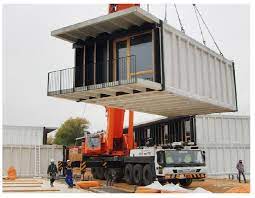The Role of Real Estate in Rural Development and Agricultural Innovation

Real estate plays an essential role in rural development and agricultural innovation. The term “real estate” refers to land and its natural resources, such as water, minerals, and crops. Rural areas, which include small towns, villages, and farmland, often have unique real estate needs compared to urban areas. In this article, we will discuss how real estate can impact rural development and agricultural innovation, and the importance of addressing real estate issues in these areas.
Real estate development can provide many benefits to rural communities. For example, it can create new jobs, boost the local economy, and provide new housing options. Rural areas that have experienced population declines may also benefit from real estate development, as it can attract new residents and businesses. Additionally, real estate development can help diversify the local economy by providing new sources of income, such as tourism and recreation.
Agricultural innovation is another area where real estate can play an important role. Innovations in agriculture, such as precision farming and biotechnology, require significant investments in land, equipment, and research. Real estate can facilitate these investments by providing farmers and researchers with the necessary resources. For example, large-scale research facilities can be built on rural land to test new agricultural techniques and technologies.
Real estate can also play a role in sustainable agriculture. Sustainable agriculture is a practice that seeks to preserve the environment while maintaining a profitable farm operation. Real estate can provide farmers with access to land that is well-suited for sustainable farming practices, such as crop rotation and conservation tillage. Additionally, real estate developers can incorporate sustainable design principles into their projects, such as renewable energy and water conservation.
However, real estate can also present challenges to rural development and agricultural innovation. One issue is land ownership. In some rural areas, land is owned by a few large landowners, which can limit access to land for smaller farmers and businesses. This can make it difficult for new farmers and businesses to establish themselves in rural areas. Additionally, land-use regulations and zoning can restrict development in certain areas, limiting the potential for real estate development and agricultural innovation.
Infrastructure is another real estate-related challenge in rural areas. Rural areas often lack the infrastructure necessary to support real estate development and agricultural innovation, such as transportation networks, utilities, and broadband internet access. Without these resources, it can be difficult to attract new residents and businesses to rural areas. Additionally, lack of infrastructure can limit the effectiveness of agricultural innovations, such as precision farming technologies.
Addressing these challenges requires a comprehensive approach that involves collaboration between policymakers, community leaders, and private sector stakeholders. Some potential solutions include:
- Land use planning: Developing comprehensive land use plans that balance the needs of different stakeholders, such as farmers, developers, and conservationists.
- Infrastructure investment: Investing in infrastructure projects that support real estate development and agricultural innovation, such as road and bridge improvements and broadband internet expansion.
- Incentives for sustainable development: Offering incentives, such as tax credits and grants, for real estate developers and farmers who adopt sustainable practices.
- Public-private partnerships: Encouraging public-private partnerships that bring together government agencies, community organizations, and private sector stakeholders to address real estate-related challenges.
In conclusion, real estate plays an important role in rural development and agricultural innovation. Real estate development can create new jobs, boost the local economy, and provide new housing options, while agricultural innovations require significant investments in land and resources. However, real estate can also present challenges to rural development and agricultural innovation, such as land ownership issues and lack of infrastructure. Addressing these challenges requires a comprehensive approach that involves collaboration between policymakers, community leaders, and private sector stakeholders.



